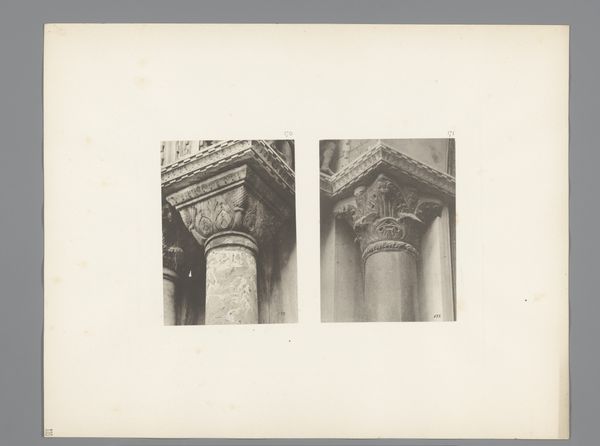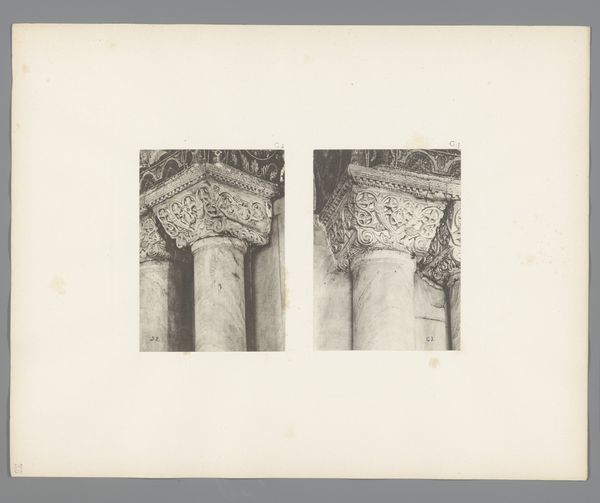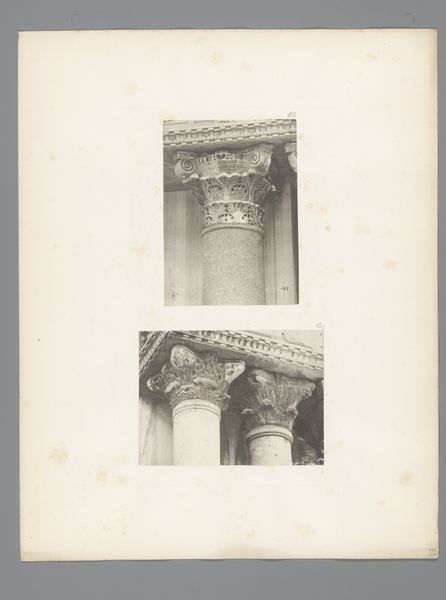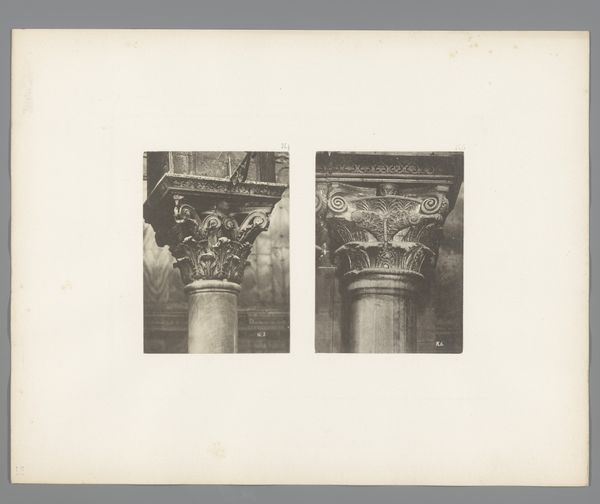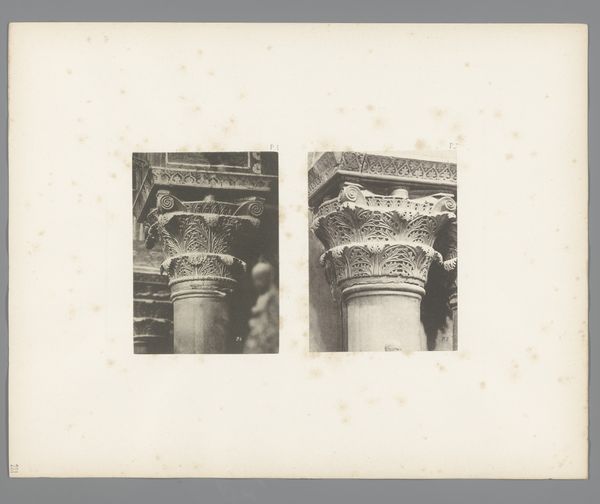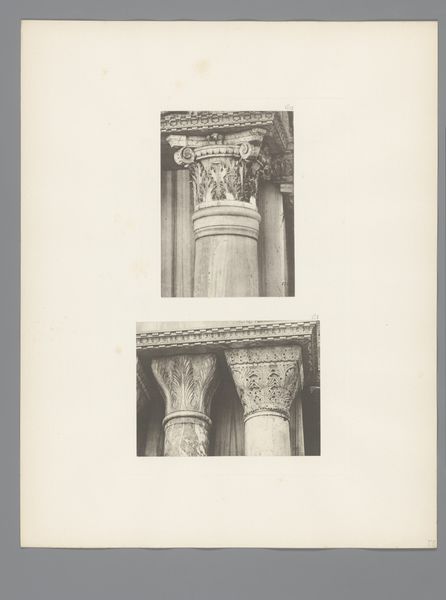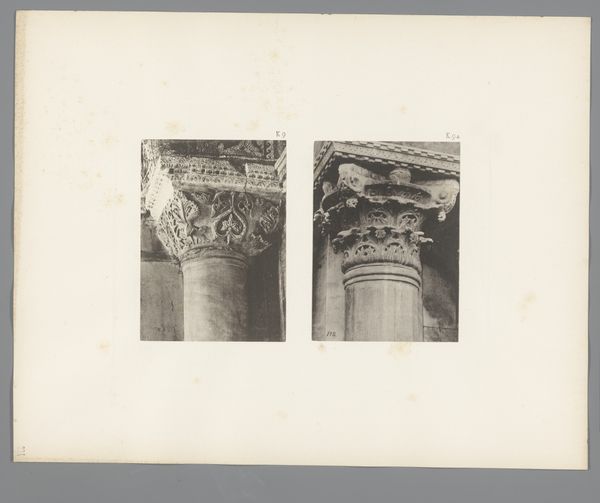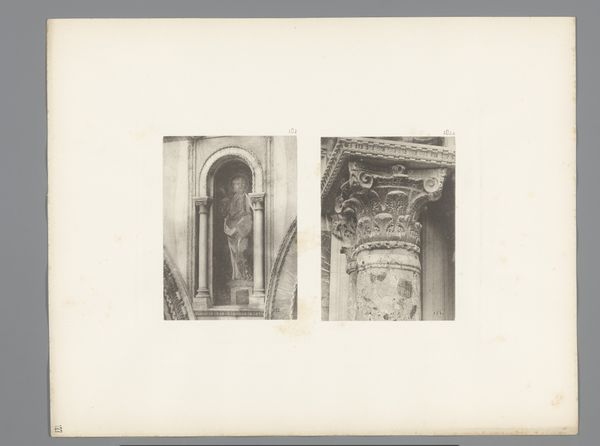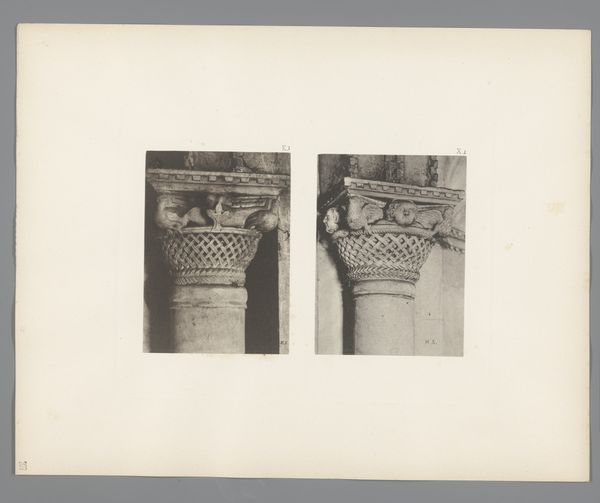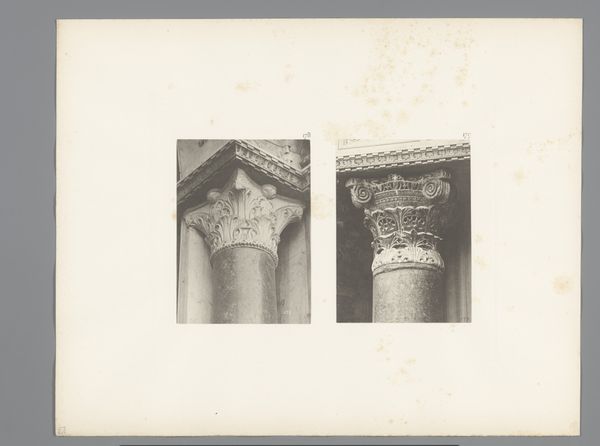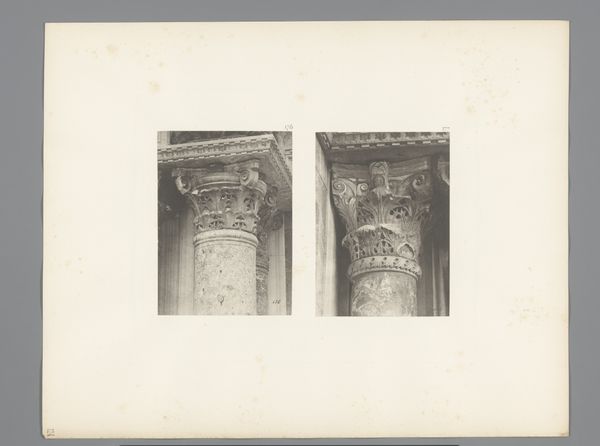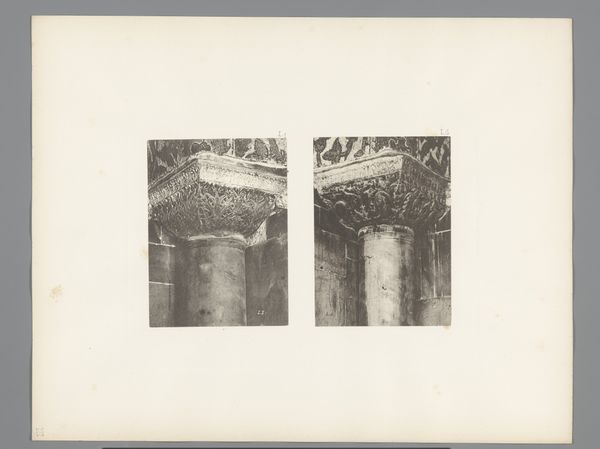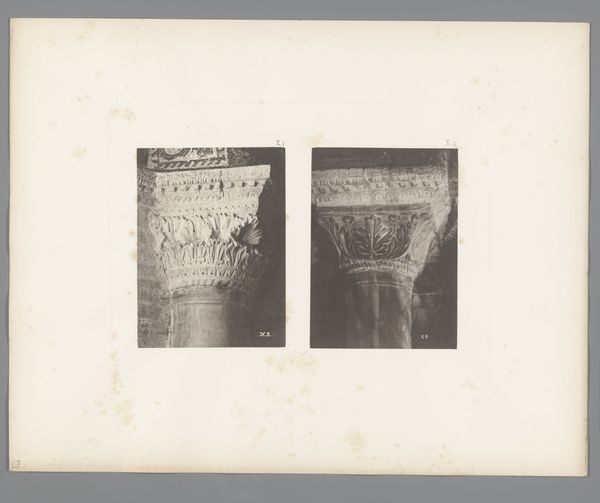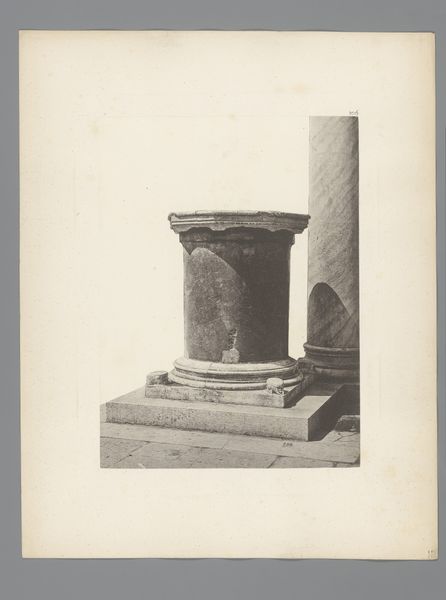
Twee afbeeldingen van Korinthische kapitelen van de San Marco in Venetië before 1884
0:00
0:00
#
faded colour hue
#
photo of handprinted image
#
aged paper
#
homemade paper
#
paper non-digital material
#
pale palette
#
pale colours
#
light coloured
#
white palette
#
pale shade
Dimensions: height 312 mm, width 395 mm
Copyright: Rijks Museum: Open Domain
Curator: Well, hello there! Look at this, "Twee afbeeldingen van Korinthische kapitelen van de San Marco in Venetië" – two images of Corinthian capitals from St. Mark's in Venice. It was created before 1884 by Carl Heinrich Jacobi, a glimpse of architectural grandeur caught in time. Editor: Wow, a whispered echo of power, wouldn't you say? Seeing these columns...it makes me think of frozen music. They exude this aged grace, almost like silent sentinels holding onto a forgotten empire. Curator: Exactly! It's about the symbolism. These Corinthian capitals, so ornate, became powerful symbols in art and architecture, communicating authority and refinement. Consider how Venice used architecture to project its power! Editor: The level of detail! Those leaves—acanthus, right?—feel so meticulously rendered. It speaks volumes about the artistry that went into creating the original capitals, and Jacobi’s documentation of them. Is it merely a photograph, though, or some kind of print? Curator: It's an early photograph, hand-printed. You can see the texture of the paper – homemade even. Its aged look actually enhances the piece. Look at how the light touches the carvings. I find myself wondering if the slight imperfections emphasize mortality. Editor: Perhaps the imperfect rendering highlights its inherent vulnerability in our minds. In any case, it gives the image a poignant aura, don’t you think? It acknowledges that we, like the stones of Venice itself, will inevitably yield to time. It definitely makes you reflect on decay. Curator: It's about legacy. It gives us a tactile connection to the past. That act of documentation, and circulation of this image, democratized access to grand art in ways previously unimagined. Photography shifted art history. Editor: It really does bridge the gap! Looking at them, though, makes me want to be there. Venice, standing beside them, listening to what the stone would have to whisper in my ear... Curator: Imagine the artisans! They probably never envisioned their work captured like this, accessible to so many. It challenges what it means to observe history. I will always look at pictures like these with so much admiration and also wonder. Editor: I know, right? In short, it shows how history, captured through art, speaks to us. This old print whispers its stories to those who pay attention. Curator: I quite agree! Thank you for making these points.
Comments
No comments
Be the first to comment and join the conversation on the ultimate creative platform.
